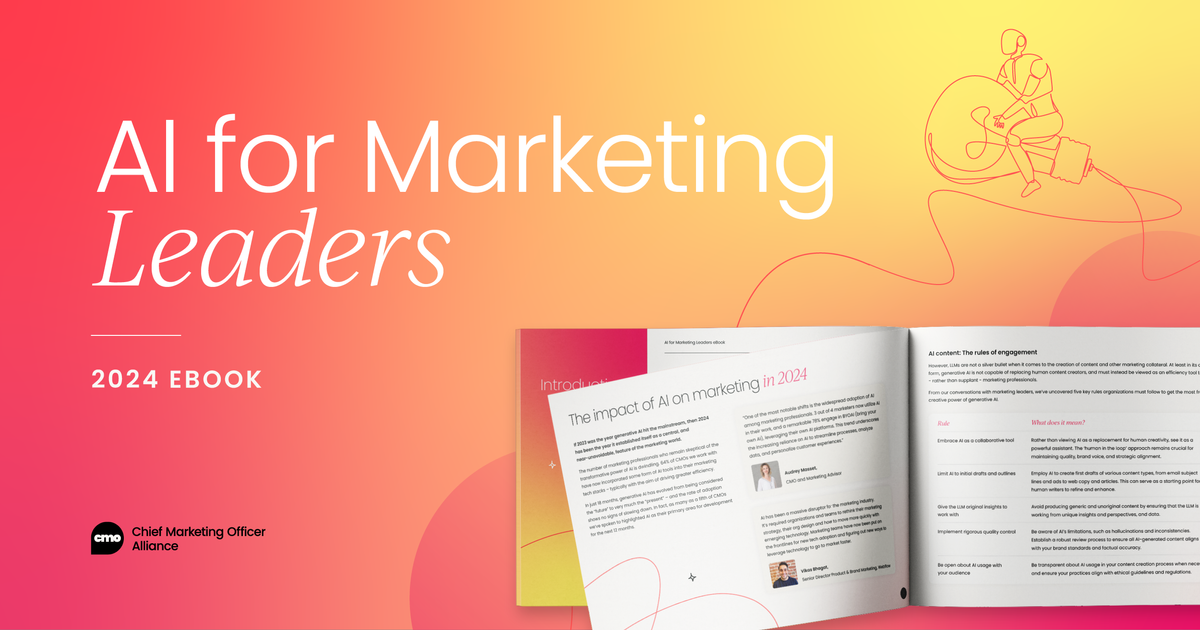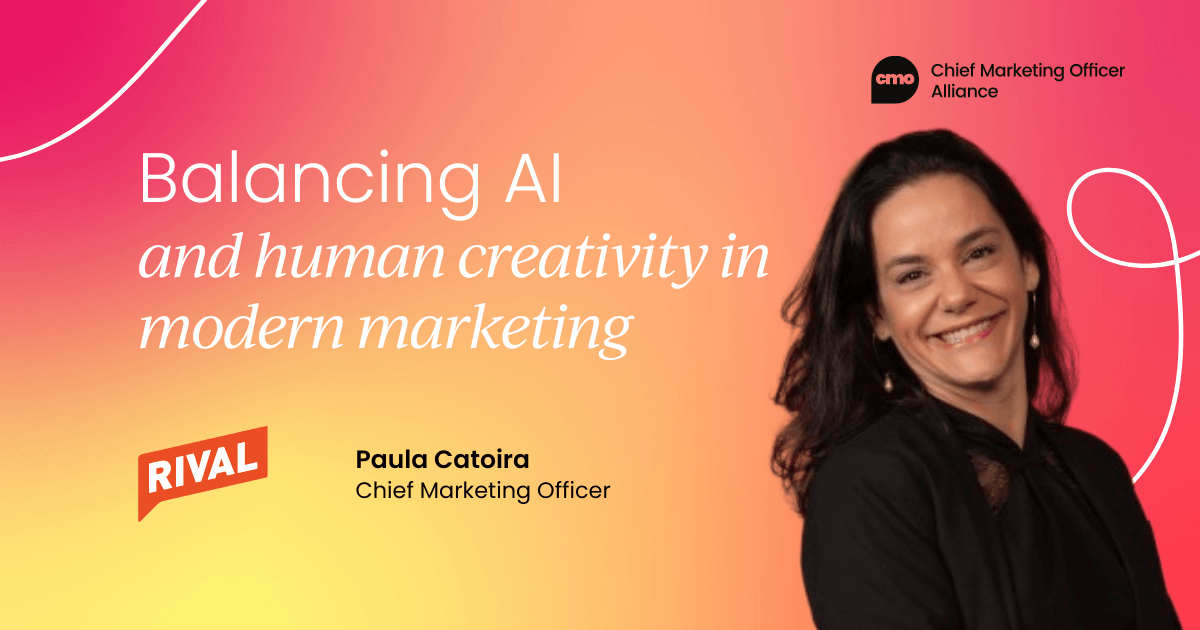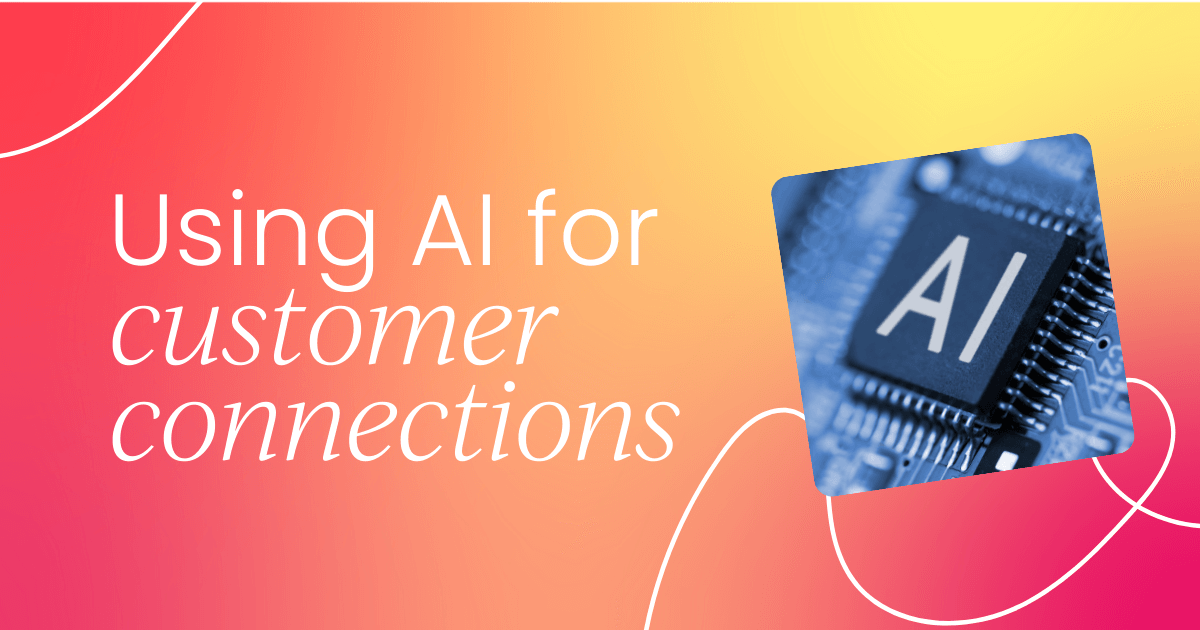The future of customer relationships isn't about choosing between AI and human connection – it's about creating a seamless integration where each enhances the other to build stronger, more meaningful customer relationships that stand the test of time.
Let’s take a look at some of the ways AI can help you build these relationships.
- How to build relationships with customers with AI
- Ways to improve customer service with AI
- Optimizing marketing automation workflows

How to build relationships with customers using AI
Turn customer calls into gold mines of insight
Through analysis of sales call transcripts and customer chats on platforms like Gong, AI spots sentiment patterns, common objections, and winning messaging approaches.
Here, CMOs can gain a real-time pulse on customer perception, effective pitches, and competitive weaknesses.
These AI-powered insights then work to drive more effective go-to-market strategies and help fine-tune messaging to align with customer needs. When urgent trends emerge, AI flags them immediately, allowing your team to pivot quickly as market conditions shift.

Make your user interface (UI) copy work harder
Creating an intuitive customer experience tops the priority list for most marketing leaders – with AI serving as your secret weapon for language refinement across digital platforms.
Smart analysis of existing UI copy leads to improvements ensuring every touchpoint – from CTAs to error messages – enhances clarity and boosts engagement.
Need multiple versions of UI copy aligned with your brand voice? AI generates them quickly while adhering to accessibility best practices and conversion optimization principles.
The result: faster iteration cycles, consistent messaging across platforms, and an improved user experience that creates happier, more loyal customers.
Run a focus group in minutes, not months
Traditional focus groups drain budgets and schedules. AI changes this equation by simulating diverse consumer perspectives almost instantly. Marketing teams test messaging, product concepts, and brand positioning without committing serious campaign resources.
AI models effectively role-play different customer segments – from Gen Z digital natives to healthcare executives or budget-conscious shoppers.
Testing marketing messages with AI reveals potential reactions, positioning weaknesses, and friction points before wider audience launches. Market validation then happens more quickly, reducing risk while maximizing campaign impact.
Personalize at scale without breaking a sweat
Hyper-personalized experiences across all customer touchpoints emerge through AI implementation.
Dynamic email content, customized website experiences, and targeted ad placements allow your brand to connect with individual preferences. This then results in significant boosts in engagement and conversion rates.

Take the pulse of your brand in real-time
Social media, online reviews, and customer feedback fall under AI's monitoring capabilities, delivering accurate brand sentiment assessment.
Marketing leaders can use this to gauge public perception, adjust messaging strategies, and quickly address potential PR issues before they snowball into bigger problems.
Create content that actually resonates
Blog posts, social media content, and video scripts tailored to specific customer interests flow from AI assistance. Marketing teams can use AI to scale their content production while maintaining relevance, consistency, and engagement across multiple channels.
It’s important to note that you must carefully consider the ethical implications of AI when creating content, as it could be plagiarizing from other sources.
The tip is to give AI something to work from, rather than creating something entirely from scratch, so you can be sure it’s improving your content and expanding on it, rather than taking from someone else’s work.
Ways to improve customer service with AI
Let chatbots handle the heavy lifting
Smart CMOs recognize customer service as a direct driver of brand loyalty.
AI-powered chatbots can help deliver round-the-clock support with instant responses on websites, mobile apps, and social channels.
These digital assistants tackle everything from FAQs to troubleshooting and user onboarding. Response times can then decrease dramatically while customer satisfaction rises.
Here, it’s important to only give AI the routine queries, with human support teams then focusing on complex, high-value interactions. This ensures you’re not alienating your customers with inhuman, unempathetic responses that could move them to churn.
The end result? Seamless support experiences building long-term brand loyalty and trust.

Sort support tickets like a pro
Categorization, prioritization, and routing of customer inquiries can happen automatically with AI-powered ticketing systems.
Natural language processing can analyze support tickets, identify patterns, and suggest responses for customer service teams.
This results in the simple requests receiving quicker resolution while the complex issues reach the right specialists efficiently, reducing wait times and improving satisfaction.
Fix problems before customers even notice
Usage patterns, conversation sentiment, and support history can help to provide early warning signals when analyzed by AI.
The system can work to detect customers struggling with features, experiencing technical issues, or showing frustration, then triggering proactive support responses.
This helps your brand address concerns before customers reach out, building stronger trust and engagement.
Read the room during support calls
Another plus is using AI-powered voice analysis to detect customer tone, stress levels, and overall sentiment during support calls.
When the system identifies frustrated customers, it can provide agents with contextual suggestions for de-escalation, personalization, or targeted solutions. Support teams then handle difficult conversations more effectively, creating better customer experiences.
Empower customers to help themselves
Self-service actually ranks as the preferred option for many customers rather than contacting support directly.
AI enhances self-service portals through dynamic FAQ suggestions, interactive troubleshooting guides, and intelligent search functions. Customers can then solve their problems independently, reducing support ticket volume while improving satisfaction.
Break language barriers
Real-time multilingual support becomes possible through AI-driven translation tools. Brands can use these tools to provide quality service across different languages and regions without maintaining extensive translation teams.
This means that global companies can connect with customers in their native languages, creating authentic engagement regardless of geography.
Integrating these AI capabilities transforms customer experience and streamlines operations, ensuring every interaction builds stronger brand loyalty and trust.

Optimizing marketing automation workflows
Smarter A/B testing for faster optimization
Forget the limitations of manual testing. AI can simultaneously analyze multiple creative elements, targeting parameters, and timing strategies, accelerating optimization while identifying high-performing combinations faster and reducing resource-intensive testing.
Gain a competitive edge with predictive analytics
AI-powered analysis of historical customer data unlocks valuable insights into future behaviors.
These insights help anticipate churn, pinpoint high-value segments, and craft hyper-personalized outreach strategies.
Predictive models enable proactive campaign adjustments and loyalty initiatives that ultimately boost engagement and retention.
Map the customer journey with precision
AI uncovers interaction patterns across platforms and highlights friction points and obstacles. By eliminating these barriers, brands create seamless, intuitive experiences that enhance customer satisfaction and foster long-term loyalty.
Optimize creative performance with visual content analysis
Advanced AI tools evaluate the impact of images, videos, and design elements, providing data-driven insights. These insights allow marketers to refine creative assets for maximum engagement and effectiveness, ensuring every visual element serves a strategic purpose.
Unlock deeper customer segmentation
AI detects subtle behavioral patterns that traditional methods often overlook, enabling the creation of highly targeted micro-segments.
This deeper segmentation powers more personalized, relevant campaigns that genuinely resonate with specific customer needs and preferences, driving better results across marketing initiatives.

One final thing to note
As we've explored, AI offers numerous opportunities to enhance customer relationships through personalized experiences, efficient service, and data-driven insights.
When implemented thoughtfully, these technologies can transform how businesses connect with their customers at every stage of their journey.
However, it's important to remember that AI is a tool to augment human capabilities, not replace them entirely. The most successful customer relationships will continue to blend efficiency with authentic human connection.
While AI can handle routine inquiries and provide valuable analytics, customers still value the empathy, understanding, and nuanced problem-solving that only human representatives can provide.
The key lies in strategic implementation – using AI where it adds genuine value while preserving human touchpoints for moments that matter most.
By striking this balance, businesses can leverage AI's capabilities while ensuring customers never feel reduced to data points or abandoned to automated systems.



 Follow us on LinkedIn
Follow us on LinkedIn









